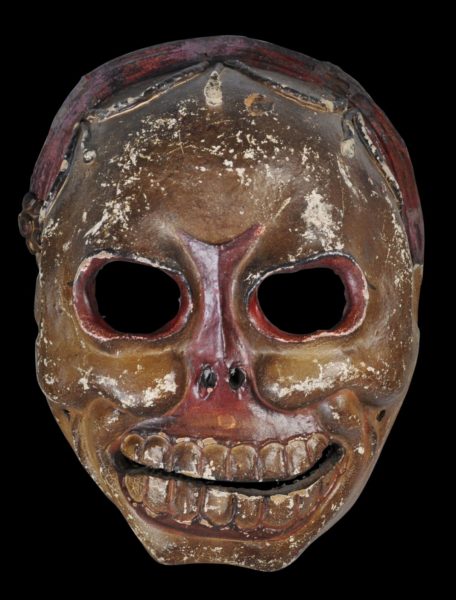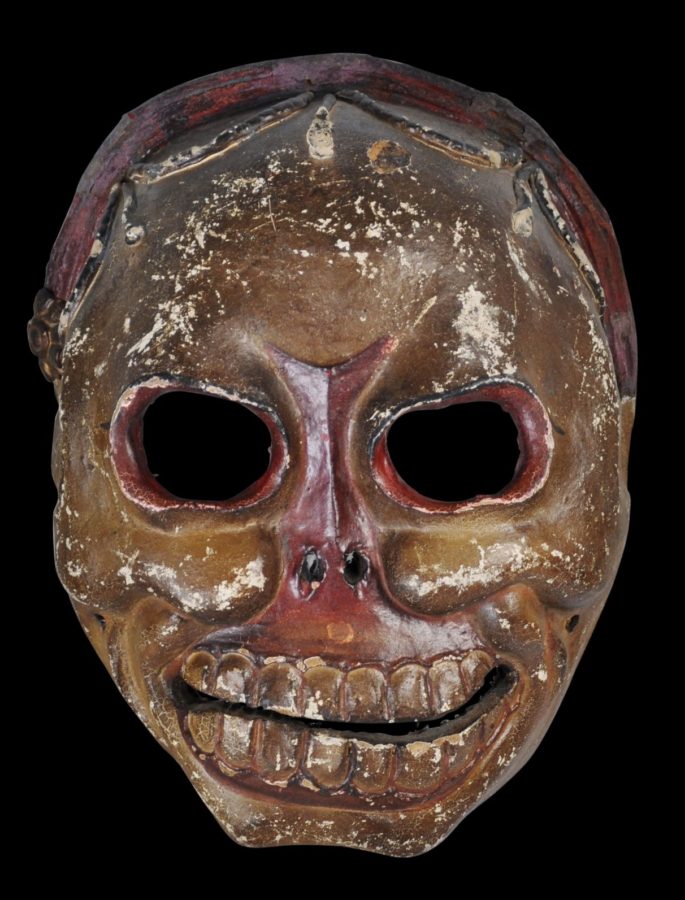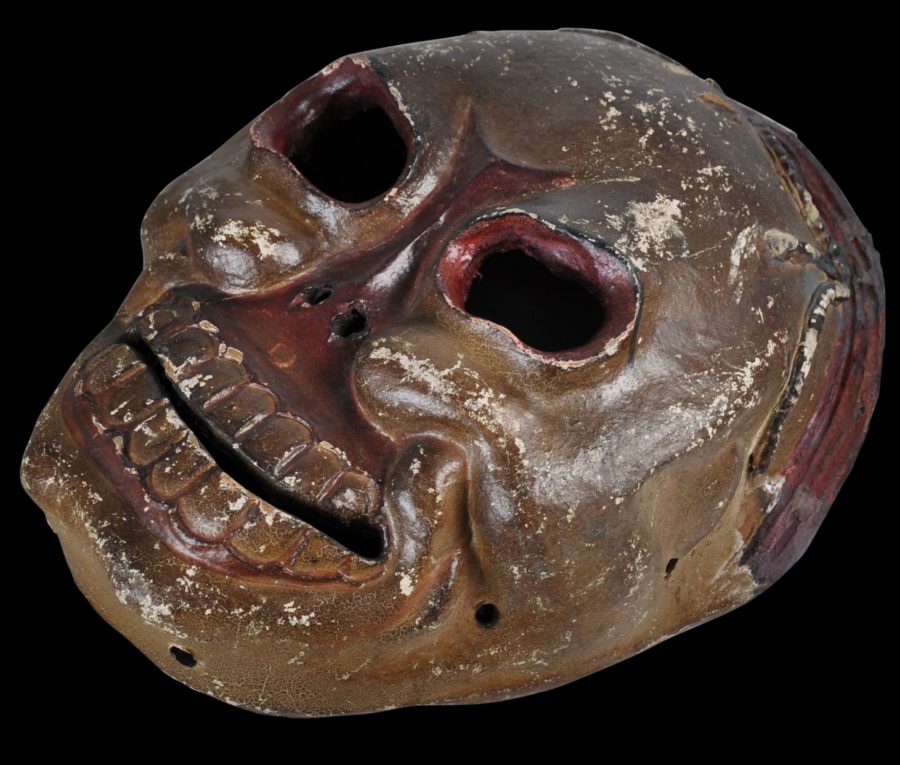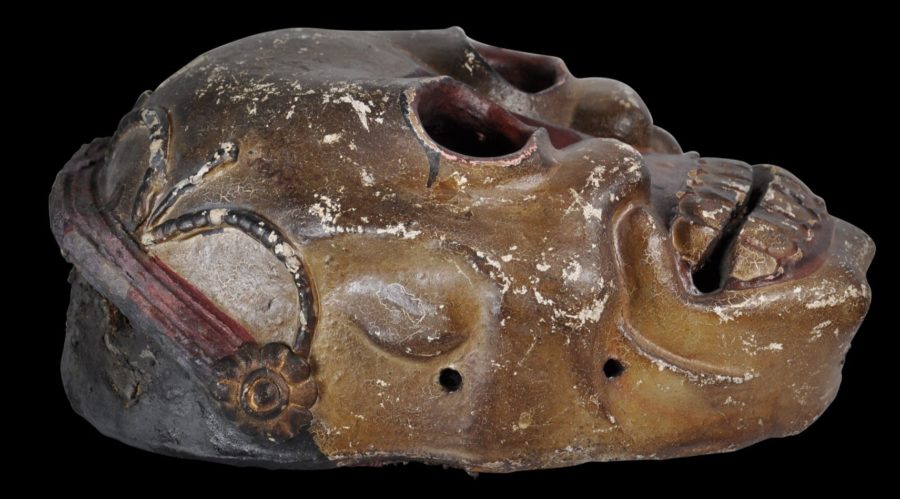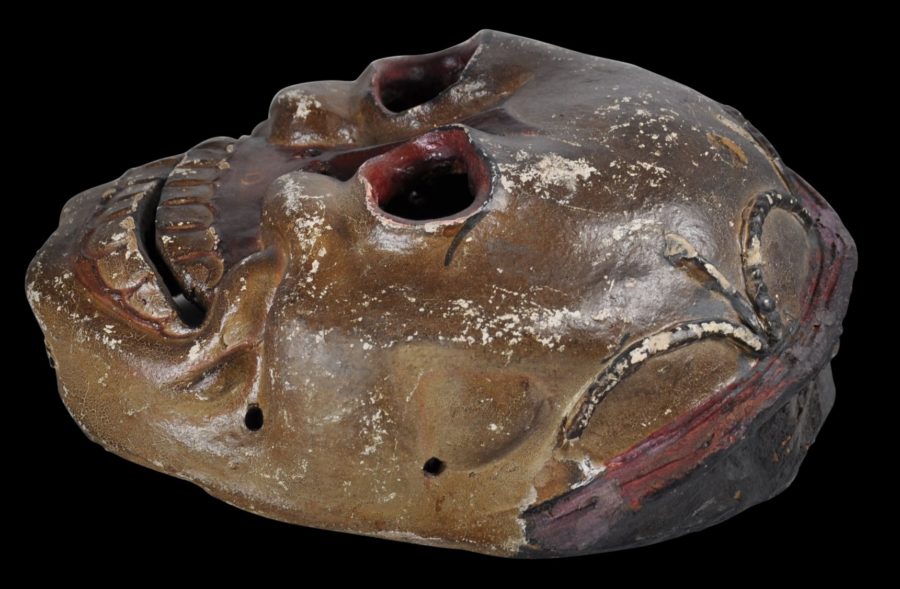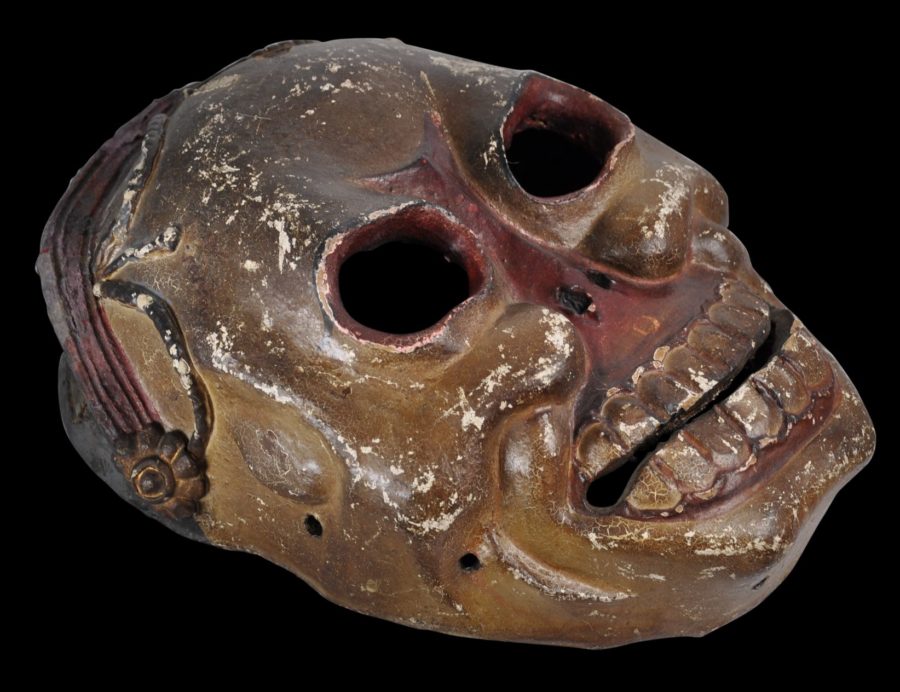This dramatic mask is from Bhutan and dates to the 19th century. It is in the form of a skull face of a citipati. The mask has high cheek bones and gaping eye sockets, with its mouth formed as a grimace.
It is constructed from painted papier mache and cloth – the media used for most ritual masks in 19th century Bhutan.
The citipati are the lords of the funeral pyre and charnel or burial grounds, and are the skeleton companions of Yama, the Lord of Death. And yet, they are intended to be humorous or comic figures in Himalayan Buddhist sacred dance, despite their gruesome appearance. In Bhutan, monastic dances whereby dancers perform as Lords of the Cremation Grounds, the performers dress in masks such as the example here (or at least they did in the 19th century – later masks are far more stylised and ‘cartoonish’) and wear costumes of white cotton and yellow silk.
The mask is in its original and used condition. The structure is stable and intact. There is old flaking to the paint here and there and one of the flower rosettes to the side of the mask no longer is present. There has been no restoration and no repainting. The mask has clearly been used ritually.
References
Berger, P., & T. Tse Bartholomew, Mongolia: The Legacy of Chinggis Khan, Thames & Hudson, 1995.
Meinert, C. (ed.), Buddha in the Yurt: Buddhist Art from Mongolia, Vol. 2, Hirmer, 2011.
Myers, D., and S. Bean (eds), From the Land of the Thunder Dragon: Textile Arts of Bhutan, Serindia, 1994.


